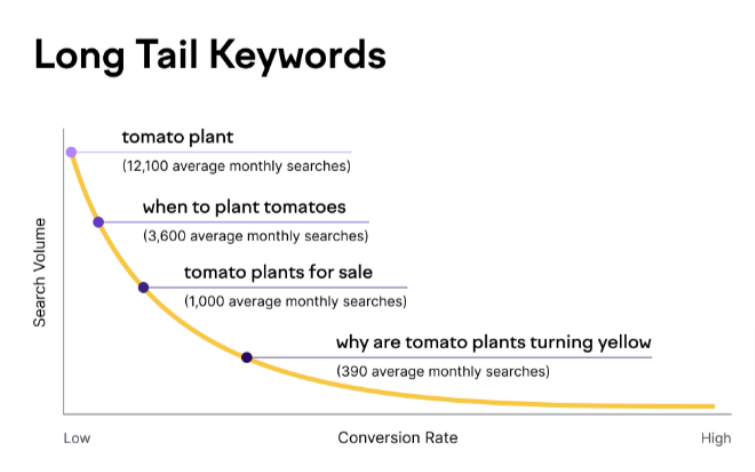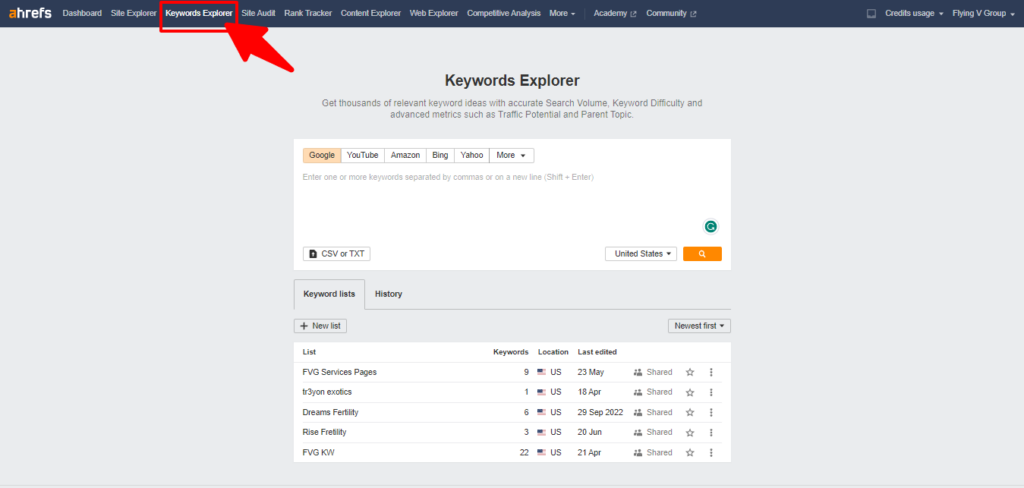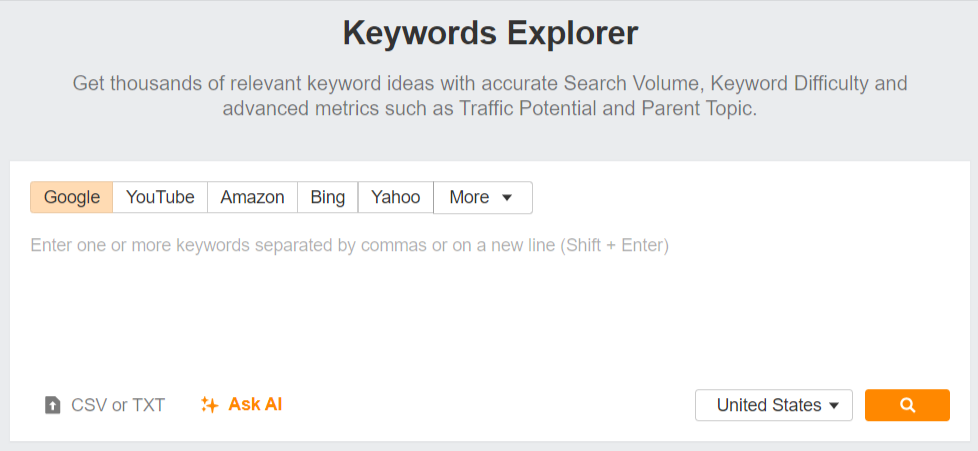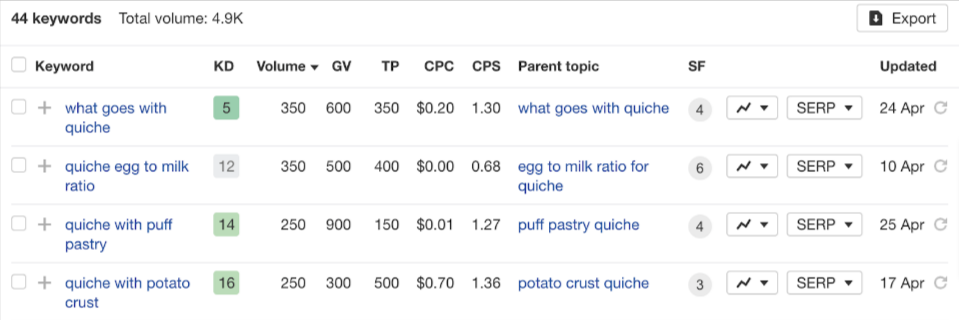Ahrefs Long tail keywords or Short tail keywords? This decision is pivotal in crafting an effective SEO strategy for high search engine rankings. Knowing which type of keyword to integrate into your website’s content can often be the make-or-break factor in your SEO success.
In this article, we delve into the fundamental differences between Ahrefs long tail keywords and short-tail keywords. We also showcase how you can use Ahrefs to unravel these elusive gems, providing invaluable insights to enhance your SEO strategy like we did for Bliss Car Wash.
- What are Ahrefs Long Tail Keywords?
- Ahrefs Long Tail Keywords vs. Short Tail Keywords: What is the Difference?
- How to Find Short-tail Keywords
- How to Find Long Tail Keywords
- Unlock Precise SEO Targeting with Ahrefs Long Tail Keywords and Flying V Group Expertise
- FAQs
- What are long-tail keywords examples?
- How do you find the long-tail keyword?
- What are long-tail keywords in URL?
- Are Ahrefs long-tail keywords good?
- What is the biggest advantage of Ahrefs long-tail keywords?
What are Ahrefs Long Tail Keywords?
Ahrefs long tail keywords are highly tailored and specialized search terms that often include three words or more.
They are more specialized and have lower search volumes than wide and general Short-Tail Keywords, which have huge search volumes but fierce competition.
A study done by Neil Patel compared the performance of long-tail and short-tail keywords and found that long-tail keywords tend to have lower search terms but higher conversion rates.
Long-tail keywords target consumers with particular search objectives and help companies reach their target market more efficiently.
They are more likely to match consumers’ specific searches, increasing the likelihood that a website will rank higher in search engine results pages (SERPs) when optimized for them.
Long-tail keywords are also renowned for having greater conversion rates since they attract visitors who are nearing the end of the purchasing cycle and are thus more likely to become clients.
Incorporating long-tail keywords into SEO and content marketing strategies is essential to unlocking the latent potential of specialized audiences.
Ahrefs Long Tail Keywords vs. Short Tail Keywords: What is the Difference?

Long-tail and short-tail keywords play a crucial role in driving organic traffic to websites and improving their visibility on search engine results pages (SERPs).
Understanding these two keywords’ differences can help businesses create effective SEO strategies tailored to their specific goals and target audience.
1. Length:
Short-tail keywords are brief, generic keyword phrases that often have one to three words in them.
They attract a lot of competition and are often looked for. A few examples of short-tail keywords include “Shoes”, “computers”, and “SEO tools”.
Ahrefs long tail keywords, on the other hand, are more precise and extensive keyword phrases that often include three words or more.
They serve specific markets and are examples of more specialized search questions. Examples of long-tail keywords are “Running shoes for women” and “SEO tools for content marketing.
2. User Intent:
Another significant distinction between Ahrefs long-tail and short-tail keywords is the motivation behind the search queries.
Short-tail keywords are often utilized by individuals who are just beginning their search process and are not specific about their needs.
For instance, a person looking for “laptops” can just be browsing without a specific intention to buy.
Long-tail keywords, on the other hand, suggest that the consumer has a more specific goal and is getting close to deciding on an option.
For instance, someone seeking for “best budget laptops for graphic design” is probably looking for suggestions or comparisons of certain products before making a purchase.
3. Conversion Rate:
A HubSpot study, while checking on their impact on conversion rates, found that long-tailed keywords are effective in driving organic traffic while short-tail keywords helped with visibility..

Long-tail keyword searches bring in more relevant visitors who are more likely to be interested in the information or goods being supplied, which leads to more engagement and sales.
Short-tail keywords could get more traffic, but the conversion rate might be lower since a lot of visitors might not be as interested in the website’s content or goods..
4. Content Strategy:
Short-tail keywords sometimes demand a more comprehensive strategy when it comes to content creation because they target a larger audience.
Making content that stands out for these very competitive keywords might be a difficult undertaking.
Long-tail keywords, on the other hand, enable companies to produce more targeted and precise content that caters to the demands of their target audience.
This focused content has the potential to boost user satisfaction and engagement, which search engines often reward with higher ranks.
How to Find Short-tail Keywords
Finding short-tail keywords is a fundamental step in any search engine optimization (SEO) strategy.
These broad and generic keywords can generate significant traffic, but their intense competition requires a strategic approach.
Ahrefs, a powerful SEO tool, offers a wealth of features to assist you in identifying the most relevant and impactful short-tail keywords for your website.
Below, we willl walk through the step-by-step process of finding short-tail keywords using Ahrefs.
Step 1: Accessing Ahrefs Keyword Explorer
To begin with, you need to log in to your Ahrefs account and navigate to the “Keyword Explorer” tool on the homepage.
This comprehensive feature enables you to discover valuable insights into keyword search volumes, difficulty scores, and potential traffic estimates.
Step 2: Entering Seed Keywords
You then need to enter a few seed keywords related to your website’s niche or industry. These should be short phrases that broadly describe your main content topics or offerings.
Ahrefs will use these seeds to generate a list of potential short-tail keywords.
Step 3: Analyzing Search Volume and Keyword Difficulty
Ahrefs will present you with a list of short-tail keyword ideas, along with essential metrics such as search volume and keyword difficulty.
Focus on keywords with high search volumes to ensure maximum visibility. However, be mindful of keyword difficulty scores; excessively competitive keywords might be difficult to rank for.
Step 4: Exploring Keyword Ideas and Variation
Take advantage of Ahrefs’ “Phrase Match” and “Having Same Terms” filters to explore variations and long-tail keyword suggestions derived from your initial seed keywords.
This approach helps you discover more specific and less competitive keywords that align with your content strategy.
Step 5: Analyzing Competitor Keywords
Leverage Ahrefs’ “Competing Pages” feature to investigate which keywords your competitors are ranking for.
By understanding their keyword strategy, you can identify potential gaps and opportunities for your own content.
Step 6: Refining and Prioritizing Short-Tail Keywords
Narrow down your short-tail keyword list by prioritizing keywords with high search volumes, manageable keyword difficulty, and strong relevance to your content.
Strike a balance between competitiveness and potential traffic to optimize your chances of ranking well.
How to Find Long Tail Keywords
Unearthing the true potential of Ahrefs long tail keywords is crucial when it comes to crafting a successful search engine optimization (SEO) strategy.
These highly specific and targeted search phrases hold incredible potential in driving relevant and qualified traffic straight to your website’s doorstep.
Luckily, Ahrefs offers a robust set of features to help you unearth these valuable long-tail gems, ultimately boosting your online visibility like never before.
Let’s dive into this comprehensive guide, where we’ll walk through the step-by-step process of finding those elusive long-tail keywords using Ahrefs.
Step 1: Get Started with Ahrefs Keyword Explorer

To embark on your keyword journey, first, log in to your Ahrefs account and find your way to the “Keyword Explorer” tool.
This incredible feature provides valuable insights into search volumes, difficulty scores, and potential traffic estimates for various keywords.
Step 2: Let’s Plant Some Seed Keywords
Start by entering a few seed keywords that are directly related to your website’s niche or the specific content topics you’re focusing on.
These seeds act as the starting point for Ahrefs to work its magic and generate those coveted long-tail keyword suggestions.

Step 3: Digging into Keyword Ideas and Variations
Ahrefs will present you with an extensive list of long-tail keyword ideas that have sprouted from your seed keywords.
Take the time to analyze the search volumes and keyword difficulty carefully scores for each suggestion.
Ahrefs long tail keywords may have low search volumes, but they face less competition, meaning they can offer excellent opportunities to climb higher in the search results ladder.

Step 4: Refining the Gems with Powerful Filters
Harness the full potential of Ahrefs’ filtering options, like “Include,” “Exclude,” “Phrase Match,” and “Having Same Terms,” to refine further and expand your long-tail keyword list.
These nifty filters will help you discover even more specific keyword variations that perfectly align with your content strategy and target audience.
Step 5: Discover Your Competitors’ Secrets
Make use of Ahrefs’ “Competing Pages” feature to analyze the long-tail keywords that your competitors are successfully ranking for.
This insightful analysis can reveal potential content gaps and expose hidden gems of keyword opportunities.
Step 6: The Art of Prioritization
You need to prioritize those long-tail keywords wisely. Strike a balance between relevance, search volume, and keyword difficulty.
Focus on highly relevant keywords to your content and have a reasonable search volume, but stay moderate with ultra-competitive ones.
Unlock Precise SEO Targeting with Ahrefs Long Tail Keywords and Flying V Group Expertise
Enhance your site’s SEO effectiveness by strategically using Ahrefs long tail keywords. Unlike the broad net cast by short tail keywords, the precision of Ahrefs long tail keywords connects you with your target audience, ensuring quality over quantity in your web traffic.
Leverage Ahrefs’ comprehensive Keyword Explorer to unearth niche terms that draw in traffic. And capitalize on the 92% of keywords identified by Ahrefs that see fewer than 10 searches per month—your gateway to untapped markets.
Flying V Group’s mastery in SEO harnesses Ahrefs’ analytics to tailor keyword strategies specifically for your brand, significantly boosting your online visibility.
Don’t miss out on potential customers. Contact Flying V Group today for a custom Ahrefs keyword strategy that turns searches into revenue.
With our nuanced understanding of both long-tail and short-tail keywords, we ensure your website stands out to the right audience. Let’s partner to skyrocket your online presence, converting searches into concrete business results.
FAQs
What are long-tail keywords examples?
Long-tail keywords are phrases that are more specific and usually longer than more commonly used keywords. Examples include “affordable organic cotton yoga pants” or “best science fiction books for teens.”
How do you find the long-tail keyword?
To find long-tail keywords, you can use tools like Ahrefs’ Keywords Explorer, look at Google’s autocomplete suggestions, related searches, or delve into forums and social media to identify specific phrases used by your target audience.
What are long-tail keywords in URL?
Long-tail keywords in URLs are the extended, more descriptive phrases included in the webpage address, which help search engines and users understand the content’s focus, like “www.booksstore.com/best-science-fiction-books-for-teens.”
Are Ahrefs long-tail keywords good?
Yes, Ahrefs long-tail keywords are considered good as they tend to have less competition, can be more targeted towards the user’s intent, and often result in higher conversion rates for SEO campaigns.
What is the biggest advantage of Ahrefs long-tail keywords?
The biggest advantage of Ahrefs long-tail keywords is their ability to attract a more specific audience, leading to improved conversion rates as the traffic is often more qualified and closer to making a purchase or taking a desired action.






0 Comments